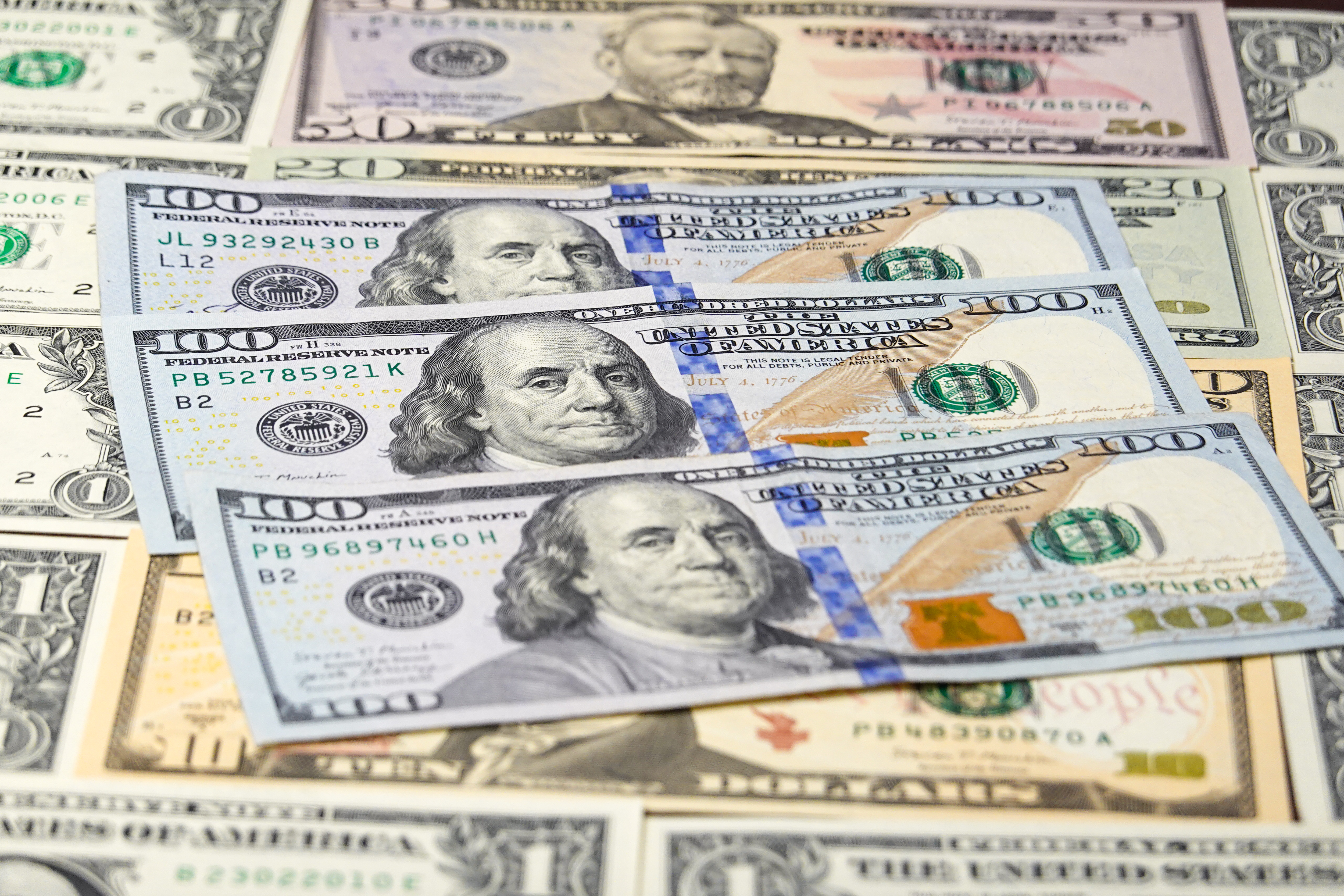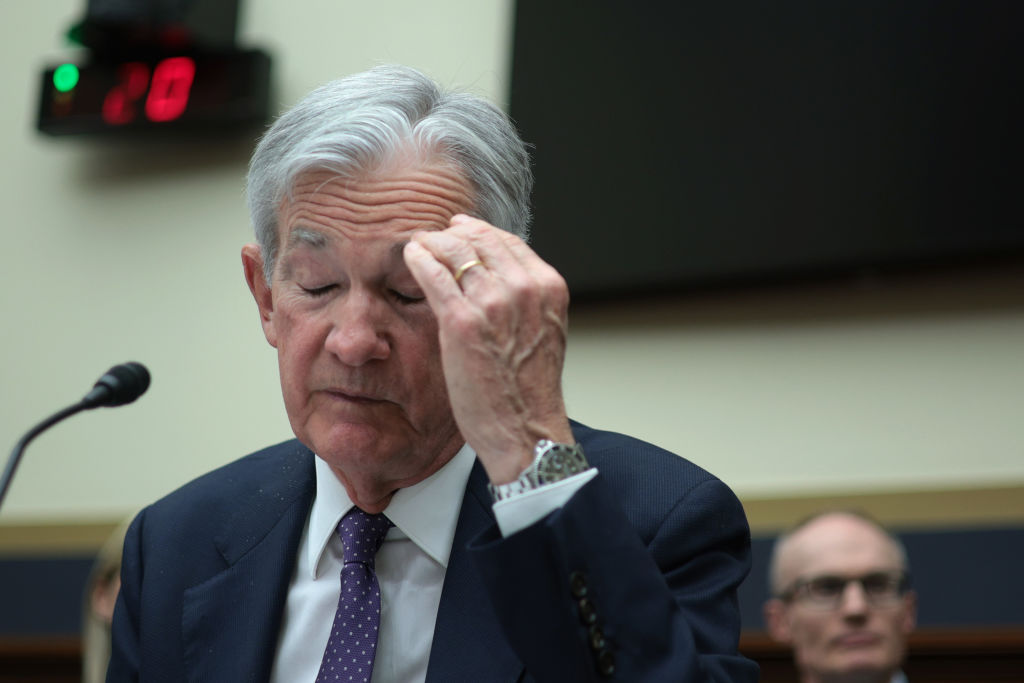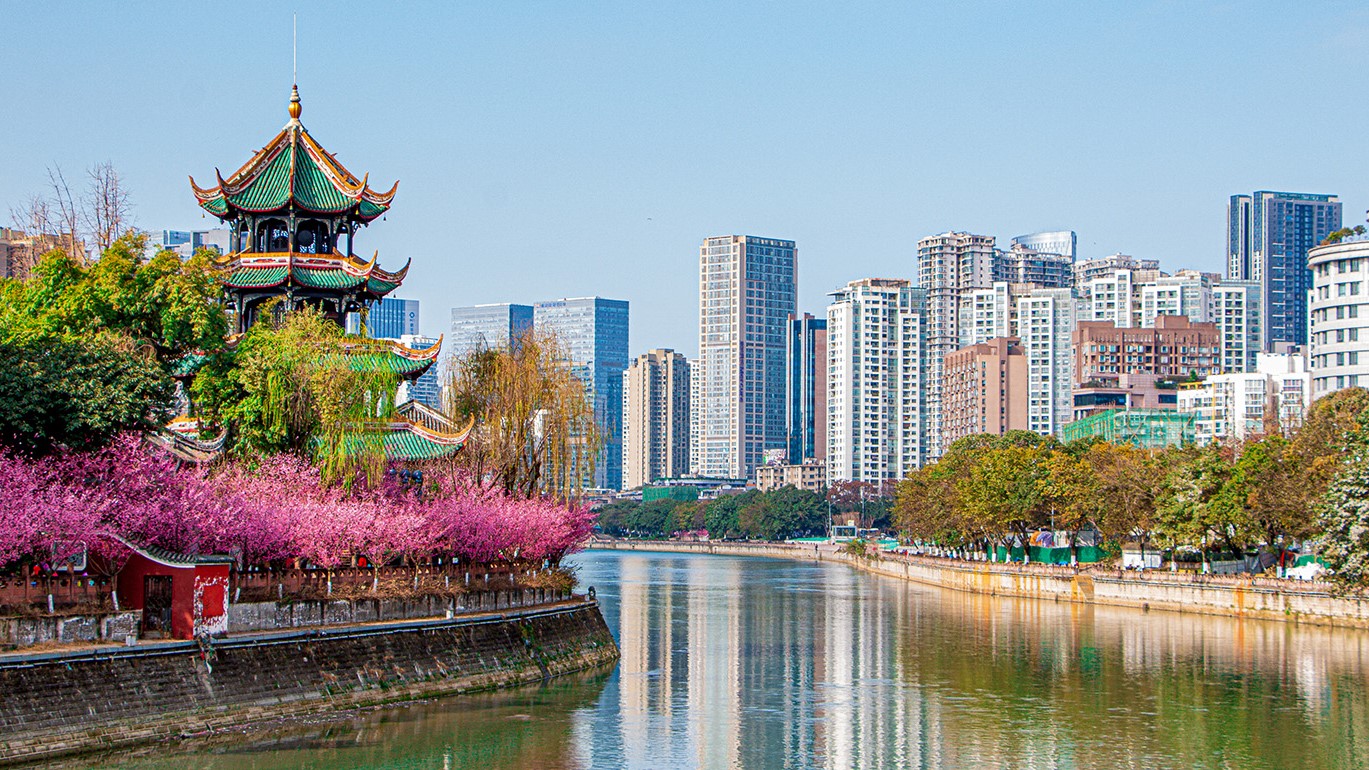It may not look like it, but inflation is coming our way. Here's how to invest
We’re in the middle of a huge global recession. And central bank money printing didn’t lead to inflation after 2008. So why are we saying that it will now? John Stepek explains why it’s different this time.


The world is facing the worst downturn since World War II, according to the World Bank, with global GDP set to fall by 5.2% this year. Markets this week may have cheered a jump in US employment last month, but the unemployment rate still sits at a staggering 13% (and due to an error in the calculations, was probably significantly higher) and the economy is now officially in a recession that the National Bureau of Economic Research reckons started in February. In the UK, we’re attempting to open the country up again, but while the pubs might be open later this month, we still can’t make any headway on getting children back to school, which promises to make any “return to normal” a tricky task for working parents. And we’re still not much clearer on when or if we can expect any vaccine for Covid-19, which means the spectre of a second wave remains a valid worry.
Against that backdrop – mass unemployment, plus a slump in demand – fear of inflation may seem a little misplaced. What’s behind it? There’s one simple answer – it’s all the money printing. Central banks across the globe, emboldened by their actions following 2008, have slashed interest rates, embarked on even more quantitative easing (QE) and moved from buying government bonds to all sorts of other assets. We’ve already seen the impact in financial markets. In the last week or so the “smart” money on Twitter has been decrying a fad among small investors using free-to-trade apps such as Robinhood for taking punts on stocks that are technically bankrupt. And yet, given that the Federal Reserve has pretty much outlawed bankruptcy, why wouldn’t day traders take such a gamble? It’s certainly no more outlandish than the craze of a few years back for betting on newly minted cryptocurrencies, or the dotcom madness of 2000.
But what about Japan?
However, that’s asset price inflation, not consumer price index (CPI) inflation – or “real world” inflation. Most people would agree that central bank liquidity has played an important role in the rally, even if they would argue about the precise extent. But there’s an obvious quibble with the idea that this could now feed through into the “real” world, rather than simply boosting financial markets. If money printing leads to higher prices in the shops and higher wages in the workplace, then why haven’t we seen much of this sort of inflation since 2008, when they printed all that money in the wake of the financial crisis? An even trickier question is this: why has Japan been fighting an endless, mostly losing battle with deflationary pressure since its asset bubble burst 30 years ago, despite its extraordinary money-printing efforts since then?
MoneyWeek
Subscribe to MoneyWeek today and get your first six magazine issues absolutely FREE

Sign up to Money Morning
Don't miss the latest investment and personal finances news, market analysis, plus money-saving tips with our free twice-daily newsletter
Don't miss the latest investment and personal finances news, market analysis, plus money-saving tips with our free twice-daily newsletter
The first question is relatively straightforward to answer. Money printed by central banks gets into the “real” economy via the banking system. The problem after 2008 is that the banks were bankrupt. They didn’t have the capacity to lend any money – instead, what they needed was time to lick their wounds and fix their balance sheets by gradually recognising bad debts over an extended period, in such a way that wouldn’t reveal their underlying insolvency. So money printing was merely plugging a massive hole elsewhere in the system. Without it, the post-2008 environment, lacklustre as it was, would have turned into something more like the 1930s. In other words, any inflationary impact of the central bank money printing was offset by the deflationary impact of the banking crisis.
What about the stickier problem of Japan? Although Japan’s bubble burst in 1990, Japan’s first experiment with QE in the early 2000s ran into a similar problem as in the post-2008 environment – central bank money printing largely offsetting balance sheet repair by bankrupt banks. The more recent, more aggressive experiment with money printing (known as QQE – quantitative and qualitative easing), only really began in earnest in 2013, shortly after Shinzo Abe’s election, as part of his strategy to reignite the Japanese economy. As James Ferguson of the MacroStrategy Partnership explains, the problem this time is that by this point Japanese banks were among the biggest holders of Japanese government bonds (JGB). If the central bank buys a JGB from a bank, as opposed to another type of investor, then no new money has been created – they’ve just swapped assets. Since QQE began, Japanese bank holdings of JGBs have fallen steadily – but inflation hasn’t been sparked (yet).
It really is different this time
When you understand why QE didn’t “work” before, you start to see why the present situation is quite different. For one thing, the banking system is in much better shape. It’s no longer a yawning deflationary black hole, swallowing up money as fast as it can be printed. For another, this is genuinely new money – it’s not just juggling bond holdings between central banks and banks. As Ferguson pointed out last month, the Fed has already bought nearly $2trn-worth of US government debt (Treasuries) “either directly… or indirectly funding the immediate spending commitments of the Department of the Treasury”. And while Ferguson notes that the widely used M2 measure of money supply has many problems as a statistic, it still seems worth pointing out that it rose by 18% in April. That was the fastest growth rate since 1983 and also far larger than the spike seen in 2008. In other words, money printing on this occasion is getting out beyond the financial system, mainly because it’s being spent by governments to try to mitigate the worst of the shutdown impacts.
That brings us to the real world, where it’s clear that despite the surge in layoffs and furloughs, many consumers are now in a better financial state than they have been in some time. The picture may well deteriorate as support measures are wound down (though be prepared for them to wind back up if they do) but for now it’s very clear – consumers on both sides of the Atlantic have collectively made big improvements to their balance sheets while under lockdown. In the UK in April we saw the largest repayment of credit-card and personal-loan debt on record – an extraordinary £7.4bn was repaid. Meanwhile, in the US, the savings rate has shot up to 33% of income from just 8%, notes Tan Kai Xian of research group Gavekal.
This is all coming at a time when supply chains are under pressure across the globe, again due to coronavirus. John Furner, the US president and chief executive of giant supermarket chain Walmart, recently pointed out that the price of meat “has picked up over the last few weeks, as plants have been inoperable in certain parts of the country”. Nor does it help that, as Louis Gave of Gavekal puts it, with “the Fed, European Central Bank and Bank of Japan backstopping credit markets, and governments moving to prop up all sorts of businesses, we seem to be entering a world where bankruptcies, at least for big firms, will be stopped”.
On the one hand, this leads to overcapacity, which is deflationary as it means there’s too much supply. However, as of right now, that’s not an issue. And on the other hand, it undermines competition, encourages governments to protect “national champions” and leaves valuable scarce resources in the hands of inefficient operators, all of which damages productivity and is ultimately inflationary. Jeremy Grantham, co-founder of US asset manager GMO, may have put it best in a recent podcast with Patrick O’Shaughnessy of OSAM: “You have no goods, no services to buy and lots and lots of money to buy it with. So of course, it’s an intrinsically inflationary process. We are cranking out paper as the output of goods and services drops way down and that can easily go wrong”.
The politics of economics
Then there’s the political environment. Albert Edwards of Societe Generale points to an interesting report from the CSIS think tank, which notes that growing mass political protests “are in fact part of a decade-long trend line affecting every major populated region of the world, the frequency of which has increased by an annual average of 11.5% between 2009 and 2019… While each protest has a unique context, common grievances overwhelmingly centre on perceptions of ineffective governance and corruption… Citizens are losing faith in their current leaders, elites and institutions and are taking to the streets in frustration and often disgust”. Against this backdrop, it’s little wonder that we see such enthusiasm for Modern Monetary Theory (MMT). Its academic practitioners might feel that their arguments are not adequately represented in the media, but the important thing is what politicians take from MMT. And the main lesson that, rightly or wrongly, they will take from it is that you can conjure up money to spend on whatever you (or more importantly, your potential voters) want without any short-term consequences.
Be aware that we might still see further deflationary scares before we do see a significant rise in consumer-price indices. Edwards notes that “I too believe that massive monetary and fiscal stimulus will begin to drive CPIs higher, but as Milton Friedman said, ‘monetary policy works with long and variable lags’”. So he still reckons we’ll see “in the interim a deflationary bust”. While we’re not entirely sure on this point, we could certainly see markets take a breather. An obvious trigger point could be any disappointment arising from Europe’s efforts over the next month or two to agree on a European Union-wide coronavirus fiscal stimulus package – markets appear to think that we’re well on the way to a federal Europe, complete with jointly issued debt, but eurozone politicians have a habit of stretching market nerves to breaking point. However, in the longer run an inflationary endgame seems extremely likely. So what should you invest in?
The cheapest sector in markets today
Given that we’ve just seen one of the most rapid bear markets in history swiftly followed up by one of the quickest rebounds, you might think that there’s little out there that’s still obviously cheap. However, that’s not entirely the case. As Pierre Gave of Gavekal put it strikingly in a recent research note, “if you had invested $100 into the S&P GSCI commodity index in January 2012, today you would be left with $32. The same $100 invested in the MSCI World equity index would be worth $225, while $100 in the JP Morgan global bond index would leave you with $134”. In other words, commodities have had an absolute shocker for almost a decade now.
The good news on that front is that it means they now look very cheap, particularly relative to everything else. At the end of April, the aforementioned Jeremy Grantham and his GMO colleague, Lucas White, put out a paper pointing out that commodity producers tend to trade at an average discount of around 28% to the wider market (using the S&P 500 in the US as a benchmark) – so they’re always a little undervalued by markets in any case. However, by the end of March 2020 that discount had widened to almost 80% – unheard of in at least a century. So even if commodity prices were to remain exactly where they are now, as Grantham and White put it, “public resource equities would be well positioned to generate strong returns, either through a revision in valuation or through the high dividend yields on offer”.
Importantly, this isn’t just a play on hopes for a rapid post-coronavirus “recovery”. As Gave adds, all of the normal forces – urbanisation, a population that’s still growing and the infrastructure needed to support them – point to ongoing demand for commodities. Meanwhile, additional fiscal stimulus packages, plus a “sense that each country should retain at least some local manufacturing capacity” in a world where “just-in-time” supply chains are no longer deemed sufficiently resilient, should also boost demand. So how can you invest? We look at some of the most promising options below.
How to invest for a more inflationary world
As Grantham and White point out above, big diversified miners offer decent dividend payouts these days (which wasn’t always the case). If you are looking for a single stock to add to your portfolio, the likes of BHP Billiton (LSE: BHP) or Rio Tinto (LSE: RIO) are obvious London-listed options and both yield around 4%-5%.
However, we’d probably be more inclined to invest using a fund. Thankfully there is a wide range to choose from. BlackRock World Mining (LSE: BRWM) is a hardy perennial in the sector with a solid record. It currently trades on a discount to its net asset value (NAV) of around 13% and is up around 12% in the past year. The trust invests in many of the biggest mining names in the world, including the two mentioned above.
A riskier play, but one that also has a decent record within its sector, is Baker Steel Resources (LSE: BSRT). The trust trades on a discount of around 22%, and has risen by around 13% in the last year. Its largest holding is FTSE 100 precious metals miner Polymetal, but it also invests in unlisted resources firms involved in the exploration or production of a wide range of different commodities (which is why it’s a riskier bet than the BlackRock trust).
As we always note, gold is something to own in your portfolio as a hedge against inflation, financial repression and general instability. You can buy physical bullion or get exposure via an exchange-traded vehicle such as WisdomTree Physical Gold (LSE: PHAU) or The Royal Mint (LSE: RMAU). Right now, miners also look more promising than they have in a long time. Precious metals mining funds are a good way to diversify your exposure across a risky sector (Citywire highlights Ruffer Gold and Ninety One Global Gold as two of the top performers in the sector, up 95% and 76% over one year respectively). As George Cheveley, manager of the Ninety One fund points out, miners currently have “low debt levels, the highest margins we’ve seen in years and [they are] increasing returns to shareholders”. And with most annual production “unhedged” (ie, being sold at current prices rather than previously agreed ones), any rise in gold prices goes “straight to the bottom line”.
If you’re feeling a bit more aggressive, Jack Brumby of Stockopedia highlights a couple of London-listed gold miners as worthy of further investigation – “proven quality operator” Centamin (LSE: CEY) and the relatively cheap Pan African Resources (LSE: PAF). Or you could take a bet on gold’s more volatile sibling, silver. Silver has been playing catch-up with gold recently, but is still cheap in relative terms and should arguably be able to do better in an environment in which industrial commodities are rising too (silver has monetary and industrial uses, whereas gold is very much a monetary metal). One way to invest is via a fund tracking the silver price, such as WisdomTree Silver (LSE: SLVR).
One probable casualty of higher inflation is the US dollar. Financial repression (efforts by central banks to keep interest rates low and thus reduce debts via inflation) means that bond prices may be propped up by central banks (for a time, although they’ll still be unappealing investments if inflation really does take off), but the strains have to show up somewhere, and the obvious candidate is the currency.
With that in mind, other areas to look at include emerging markets. As analyst Eoin Treacy notes on the Fuller Treacy Money site, “gold and emerging markets tend to be highly correlated. The emerging market sector is likely to benefit from the weakening dollar environment and is trading at a significant valuation discount”.
Morgan Stanley, meanwhile, is among those noting that we might finally be seeing a swing towards “value” rather than “growth” stocks. Cyclical stocks have outperformed since the market bottomed in March and the investment bank’s analysts reckon that will continue. As well as buying into the “industrials and materials” sectors, they say, it may be time for the popular technology stocks to underperform.
Get the latest financial news, insights and expert analysis from our award-winning MoneyWeek team, to help you understand what really matters when it comes to your finances.
John Stepek is a senior reporter at Bloomberg News and a former editor of MoneyWeek magazine. He graduated from Strathclyde University with a degree in psychology in 1996 and has always been fascinated by the gap between the way the market works in theory and the way it works in practice, and by how our deep-rooted instincts work against our best interests as investors.
He started out in journalism by writing articles about the specific business challenges facing family firms. In 2003, he took a job on the finance desk of Teletext, where he spent two years covering the markets and breaking financial news.
His work has been published in Families in Business, Shares magazine, Spear's Magazine, The Sunday Times, and The Spectator among others. He has also appeared as an expert commentator on BBC Radio 4's Today programme, BBC Radio Scotland, Newsnight, Daily Politics and Bloomberg. His first book, on contrarian investing, The Sceptical Investor, was released in March 2019. You can follow John on Twitter at @john_stepek.
-
 The challenge with currency hedging
The challenge with currency hedgingA weaker dollar will make currency hedges more appealing, but volatile rates may complicate the results
-
 Can Donald Trump fire Jay Powell – and what do his threats mean for investors?
Can Donald Trump fire Jay Powell – and what do his threats mean for investors?Donald Trump has been vocal in his criticism of Jerome "Jay" Powell, chairman of the Federal Reserve. What do his threats to fire him mean for markets and investors?
-
 Freetrade’s new easy-access funds aim to beat top savings rates
Freetrade’s new easy-access funds aim to beat top savings ratesFreetrade has launched an easy-access exchange traded fund (ETF) range - here’s how the ETFs work and how they compare to the savings market
-
 Go for value stocks to insure your portfolio against shocks, says James Montier
Go for value stocks to insure your portfolio against shocks, says James MontierInterview James Montier, at investment management group GMO, discusses value stocks and slow-burn Minsky moments with MoneyWeek.
-
 Where do we go from here?
Where do we go from here?Features A new series of interviews from MoneyWeek
-
 As China reopens, why pick an income strategy?
As China reopens, why pick an income strategy?Advertisement Feature Yoojeong Oh, Investment Manager, abrdn Asian Income Fund Limited
-
 Income in the USA
Income in the USAAdvertisement Feature Fran Radano, manager on The North American Income Trust
-
 The challenge of turbulent markets
The challenge of turbulent marketsAdvertisement Feature Today, ISA investors face one of the most challenging economic environments seen in recent years. However, good companies can still thrive, even in the toughest economic conditions. That’s why BlackRock’s fund managers focus on these businesses when they’re looking for investment opportunities.


